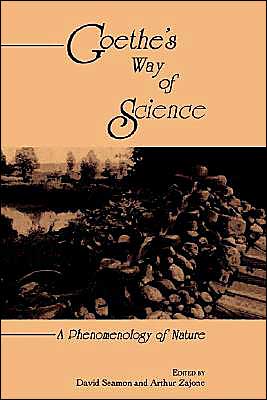Goethe's Way of Science: A Phenomenology of Nature
Though best known for his superlative poetry and plays, Johann Wolfgang von Goethe (1749-1832) also produced a sizable body of scientific work that focused on such diverse topics as plants, color, clouds, weather, and geology. Goethe's way of science is highly unusual because it seeks to draw together the intuitive awareness of art with the rigorous observation and thinking of science. Written by major scholars and practitioners of Goethean science today, this book considers the philosophical...
Search in google:
Though best known for his superlative poetry and plays, Johann Wolfgang von Goethe (1749-1832) also produced a sizable body of scientific work that focused on such diverse topics as plants, color, clouds, weather, and geology. Goethe's way of science is highly unusual because it seeks to draw together the intuitive awareness of art with the rigorous observation and thinking of science. Written by major scholars and practitioners of Goethean science today, this book considers the philosophical foundations of Goethe's approach and applies the method to the real world of nature, including studies of plants, animals, and the movement of water. Part I discusses the philosophical foundations of the approach and clarifies its epistemology and methodology, Part II applies the method to the real world of nature, and Part III examines the future of Goethean science and emphasizes its great value for better understanding and caring for the natural environment. Booknews Examines the sizeable body of scientific work that Goethe (1749- 1832) produced alongside his well known poetry and plays. Considers the philosophical foundations of his approach and applies the method to the real world of nature, including studies of plants, animals, and the movement of water. Finds his science to be highly unusual because it seeks to meld the intuitive awareness of art with the rigorous observation and thinking of science.
List of FiguresPrefaceGoethe, Nature, and Phenomenology: An Introduction11Goethe and the Science of His Time: An Historical Introduction152The Metamorphosis of the Scientist333Goethean Science554Goethe, Science, and Sensory Experience715The Idea in Nature: Rereading Goethe's Organics836Transformations in the Foliage Leaves of the Higher Plants1157The Unity of Science and Art: Goethean Phenomenology as a New Ecological Discipline1298Horns, Hooves, Spots, and Stripes: Form and Pattern in Mammals1779Seeing the Animal Whole: The Example of the Horse and Lion21310Flowforms and the Language of Water23311The Resurrection of Thinking and the Redemption of Faust: Goethe's New Scientific Attitude25512Counterfeit and Authentic Wholes: Finding a Means for Dwelling in Nature27713Light and Cognition: Goethean Studies as a Science of the Future299Contributors315Index319
\ BooknewsExamines the sizeable body of scientific work that Goethe (1749- 1832) produced alongside his well known poetry and plays. Considers the philosophical foundations of his approach and applies the method to the real world of nature, including studies of plants, animals, and the movement of water. Finds his science to be highly unusual because it seeks to meld the intuitive awareness of art with the rigorous observation and thinking of science.\ \ \ \ \ Boria SaxTo fully appreciate the potential and limits of [the science of Goethe], it will be necessary to discuss it...as practiced by Goethe but also by a wide range of subsequent interpreters...Ernst Haeckel, Jacob von Exukull, and Carl Jung. -- Parabola\ \








